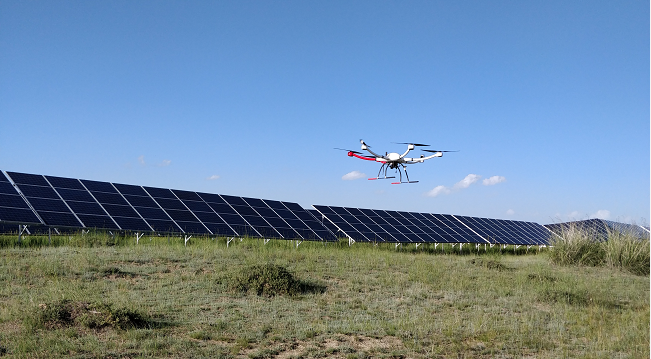Amidst the roar of the propeller, a drone carrying a high-altitude base station hovers in the air, filling the loopholes in the communication network with steel “wings”. In North China, such scenes are constantly unfolding in areas where communication is hindered.
In recent days, due to the impact of Typhoon “Dussuri”, the North China region has experienced extreme heavy rainfall, damaged communication infrastructure in multiple places, severely hindered communication, and the situation of flood control and disaster relief is severe and complex. In emergency situations, telecom operators strengthen technological innovation, adopt high-tech drone technology, improve the efficiency and quality of security work, and assist in the smooth implementation of emergency and disaster relief work.
“Villagers in Zhuozhou, due to the rainstorm, communication was interrupted. Hebei Mobile urgently dispatched the medium-sized UAV emergency communication system to reach the sky above Zhuozhou. At present, public network communication in the area where the network was suspended can be recovered from the air. Please contact your family as soon as possible and wait patiently for rescue. Wish you peace!”
On the morning of August 3rd, a “greeting from the air” quietly appeared on many people’s phones. At the moment of flooding and communication obstruction, the emergency communication drone that responded to the mission and rushed into the sky opened a small window for the affected people to connect with the outside world.
As a new emergency communication method, unmanned aerial vehicle (UAV) emergency communication high-altitude base stations have unparalleled advantages in quickly restoring post disaster communication and improving emergency communication support capabilities, making them the first choice for communication enterprises when dealing with flood situations. On the evening of August 2nd, under the coordinated command and dispatch of the Ministry of Industry and Information Technology and the Emergency Management Department, China Mobile urgently transferred the aerospace emergency communication system to Zhuozhou. After intense on-site data configuration and system testing, the aerospace emergency communication system was successfully launched at 7 am on August 3rd, and the drone officially took off for rescue, achieving effective signal coverage of over 30 square kilometers and supporting 200 concurrent users for business, Satisfied the basic communication needs of densely populated areas in the first time.
Except for Hebei, China Mobile drones played a crucial role in the communication efforts in Beijing, Heilongjiang and other places during this flood season. According to the relevant person in charge of Heilongjiang Mobile, the DG-M20 tethered unmanned aerial vehicle system was used for this emergency communication support task. In the event of large-scale communication interruption caused by natural disasters, this model of drone can deploy base station equipment in the air at an altitude of 200 meters, ensuring communication signal coverage within a maximum radius of 3 kilometers. It can hover continuously and work in the air for more than 12 hours, supporting 350 users to access simultaneously.
The unmanned aerial vehicle emergency communication system launched this time can assist in restoring network communication in severely affected areas, meeting the basic communication needs of government disaster relief command centers and local users. At the same time, the system has low takeoff requirements and strong adaptability to natural disasters such as floods and earthquakes, as well as terrain conditions such as mountains, valleys, and plateaus, and can meet the sudden needs of emergency rescue, “Heilongjiang Mobile staff told reporters.
It is reported that as of now, China Mobile’s support personnel are still fighting on the front line, and the unmanned aerial vehicle emergency communication system will continue to carry out emergency communication support tasks in the air, ensuring the communication needs of designated areas, and becoming the “air force” guarding the communication lifeline.







Please sign in to comment
register